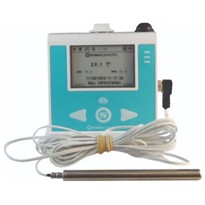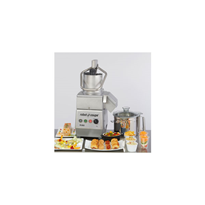DON’T BE A JERK WHEN IT COMES TO FOOD SAFETY
Jerky, a nutrient dense, high protein, low carb dried meat, is any type of meat that’s been cured in a salt solution, reducing its moisture content to less than 50%. With archaeological evidence showing its been around since the time of the Egyptians, the word jerky is derived from the term ch’arki (or charqui) meaning ‘to burn meat’. An indigenous South American tribe, the Quechua, first began using the sun, wind and smoke from fires to preserve the meat of alpaca and llama sometime around 1550.
Enjoyed in foreign markets for many years, its only relatively recently Australian consumers have discovered the joys of jerky. As we’ve seen an increase in demand for our high quality commercial dehydrators, people want relevant food safety information as well. Food safety surrounding the sourcing, production and storage of jerky is a major concern for Australians looking to buy and consume this popular and tasty snack.
With this in mind, the first thing a potential commercial producer should do is become familiar with the Food Standards Code.1 Although healthy and delicious to eat, jerky production is overseen by some pretty strict laws. And rightly so. Turning fresh meat into a preserved meat product is serious business right from the start.
SOURCING MEAT
Traditionally, jerky is made from lean strips of meat, such as pork, beef, lamb and poultry (although some feel raw poultry isn’t the best option due to the texture and flavour of the final product). Lean cuts of meat are best as fat can become rancid during production or storage resulting in unpleasant flavours, or even a ruined product.
You can use ground meat, or mince, to make jerky, but disease-causing microorganisms are harder to eliminate in mince than in whole meat strips. When using mince, choose mince with less than 10% fat content.
It goes without saying, when using quality, grass fed, Aussie beef, you’ll benefit from enhanced flavours.
We’re lucky here in Australia, our red meat production is among the safest in the world. But it doesn’t just happen. According to the Australian Good Meat2 website:
‘Australian red meat travels a pre-set pathway, passing through stockyards, the slaughter floor, chillers, boning room, packaging areas and freezers through to being loaded out in refrigerated shipping containers and trucks.
All the while, processors protect the integrity of the product through an array of hygiene, food safety, quality assurance, animal welfare, environmental and workplace health and safety regulations and procedures.’
STORING MEAT SAFELY TAKES A BIT OF PREPARATION
You’re responsible for ensuring raw meat has been stored correctly, even before it lands on your loading dock. When the meat is received, it should be checked for temperature. Pre-portioned meat should be no warmer than 5°C, carcasses no more than 7°C.
As noted in the Meat and Livestock Association’s (MLA) manual on the ‘Shelf life of Australian Red Meat’3:
‘Food safety cannot be assessed by the consumer who relies completely on all participants in the processing and marketing chain to guarantee this factor. Meat will be safe for human consumption if it has been processed according to all regulatory requirements and does not contain hazards that are harmful to human health….’
Food safety is highly regulated4 to ‘lower the incidence of foodborne illness by strengthening food safety and traceability throughout the food supply chain, from paddock to plate’
The two most common bacteria growths in incorrectly processed jerky, Salmonella and E. Coli, can prove deadly, making food safety vital.
If you’re a food business, you must adhere to the Food Standards Code for storing food safely.5 When received, raw meat should be:
- moved as quickly as possible to a storage space that’s clean, dry and pest free
- stored at 5°C or colder – check it with a thermometer
- stored separately from or below ready-to-eat foods to avoid contamination
- not stored in warm or humid areas, or in direct sunlight - this could spoil the food or make it unsafe
- stored in containers and packaging, off the ground and away from chemicals like cleaners and insect sprays.
WHAT THE HACCP
Originally developed by NASA and a group of food safety specialists in the ‘60s, Hazard Analysis Critical Control Point (HACCP) is an internationally recognised food safety and risk assessment plan. The plan outlines seven key principles in food safety:
- Hazard Analysis
- Critical Control Points
- Critical Limits
- Critical Control Monitoring
- Corrective Action
- Procedures
- Record Keeping.
While not mandatory, Australian providers to the food industry can have their products endorsed as food safe under HACCP Australia6 guidelines.
MARINADES AND SPICES
The thickness of the meat strips, and the desired end result, will determine the choice of marinades and spices used to flavour the meat. Will your jerky be soft and moist or hard and dry?
Wet marinades have different consistencies and help foster a consistent flavour and distribution of salt and spices. The recipes may include oil, salt and spices, with acidic ingredients such as vinegar, lemon juice, teriyaki, soy sauce or wine. The use of vinegar (brown, white or apple cider) increases acidity, helping to hinder bacterial growth.
Traditionally, salt and smoke was used to preserve and flavour meat. While there wasn’t much variety, it did the job of preserving meat when it was plentiful for times when meat was scarce. Over the years, many cultures have added spices to improve the taste.
Today, the sky’s the limit when it comes to the sheer variety of jerky marinades, spices and flavours but good ole salt endures as the most common type of jerky seasoning. Salt is also key to lowering the water activity level, inhibiting the growth of some pathogens and spoilage bacteria.
With marinating times of anywhere between 6 and 24 hours, this should be done in refrigeration set at between 0 to 4°C. To ensure continued food safety, commercial refrigeration units should be stabilised prior to the start of any marinating period.
NITRATE
Some commercial producers may use a ‘cure’ consisting of sodium nitrite to extend the life of their jerky. Some benefits of using nitrite as part of the curing process are:
- prevents spores of C. botulinum from germinating
- fixes the colour
- enhances flavour, and;
- it’s an antioxidant, which prevents spoilage during storage.
The amount of cure added is small, with a critical control point (CCP) of no more than 500 mg/kg. It’s usually added with salt, as sodium nitrate.
DRYING THE MEAT
Once all steps have been taken to minimise pathogens, the drying stage can begin. The Meat and Livestock Association7 recommends that, as the meat for jerky is salted under refrigeration, it can be dried at a moderate temperature of between 55 and 65°C.
The key is to achieve drying wherever there are bacteria which could spoil or make the product unsafe. For jerky, these bacteria may be on the surface.
The Food Standards Code,8 specifically section 2.2.1, states that dried meats such as jerky, must be dried to a water activity level of less than 0.85 aw to prevent microbial growth. Weight loss of the meat is a good indicator of water activity.
The rate and amount of drying depends on factors such as:
- the rate of air flow over the marinated meat
- the difference between the relative humidity of the air humidity of the food. The relative humidity of the food is usually described as water activity
- moisture diffusion within the product - be aware of drying too quickly causing the surface to dry before the centre and case hardening (dry edge) can occur
- thickness and diameter
- time
- temperature.
The best way to guarantee a stable temperature and a safe final product is with a dehydrator. This way, temperature and humidity can be controlled.
Jerky strips should be laid out carefully on a tray in a single layer. Strips should not be overlapping or touching allowing plenty of air to circulate over and around each strip.
Some jerky is softer and easy to chew. This style of jerky has a higher water content and can be eaten much faster.
Hard jerky is more the traditional food and chews longer. This jerky stays on the drying racks longer, therefore losing more water content. There’s often less preservatives used in hard jerky as the extra drying time, resulting in more water removal, stops bacteria from growing.
WATER ACTIVITY
Water activity (aw) is a measure of available water in food. That’s not as simple as how much water is in the food though, as some water is bound to other ingredients – like sugar or salt – and isn’t available. In the context of dehydration, this is important as it is the available water9 that microorganisms will use to facilitate growth.
When too much water is available, microorganisms can grow. Pure water has aw = 1.00 and raw meat has aw = 0.99. Jerky commercially produced in Australia, is legally required to be dried to a water activity level of less than 0.85.It’s a good idea to aim a bit lower for jerky.
The safest and most accurate way to monitor water activity is by using a water activity meter. It is also possible to measure weight loss to determine moisture loss, but this is not recommended for commercial applications. By the end of drying, jerky should have a water activity level below 0.75 and a moisture content of about 20%. It should feel dry.
PACKAGING AND LABELLING
Packaging for jerky must be anaerobic, essentially meaning all the oxygen has been sucked out. Removing the oxygen is thought to be one of the most effective ways to store beef jerky to retain its freshness.
This type of packaging prevents the growth of mould, thus falling within the recommended guidelines of Meat and Livestock Australia7 for products with a water activity level greater than 0.7.
Food labelling standards in Australia and New Zealand are covered in the Food Standards Code.1 The standard covers requirements including:
- Country of origin labelling
- Food allergies and intolerances
- Ingredients list and percentage labelling
- Nutrition, health and related claims
- Nutritional information
- Pregnancy warning labels
- Truth in labelling, weights and measures and legibility
- Warning and advisory statements
Specific requirements of the code for meat and meat products are outlined in Standard 2.2.1.8 The codes dried meat, such a jerky, must be:
- Dried to a water activity of no more than 0.85
- Must contain not less than 160g/kg of meat protein on a fat free basis.
You should become familiar with these requirements. For more help, contact Food Standards Australia New Zealand or chat to a specialist consultant.
STORAGE AND SHELF LIFE
Jerky has a shelf life of around two years when safely stored in a vacuum-sealed package in a cool, dark spot. If the package shows any condensation or other signs of moisture, if it looks unusual or smells funny, it’s likely to have spoiled. And if it’s mouldy, chuck it in the bin.
Once jerky has been opened, store it in the fridge. Once the seal is broken, jerky needs to stay cold to maintain its flavour, texture and freshness. Jerky can keep for as long as a week by placing it in a zip lock bag and squeezing out all the air before popping it back in the fridge.
CLEANING
There’s a few basic principles to adhere to in any environment where meat and food products are being prepared. These include:
- Having a safe water supply
- Maintaining food contact surfaces in clean condition
- Preventing cross-contamination
- Hand washing, hand sanitising and toilet facilities
- Protecting food, food packaging materials and food contact surfaces from things like lubricants, fuel, pesticides, cleaning compounds, sanitising agents, and other chemical, physical and biological contaminants
- Labelling, storing and using toxic compounds safely
- Controlling employee health
- Excluding pests
- Confining and removing wastes
The highest hygiene standards should be maintained every step of the way.
CLEANING YOUR DEHYDRATOR IS ALSO ESSENTIAL
Best practice is to clean it between every batch. The trays in our dehydrators are dishwasher safe and the insides of the dehydrator should be cleaned using a cloth and warm soapy water (being careful not to splash water onto the electrical parts). We recommend using a food-safe sanitiser spray to eliminate microbial growth.
Any cleaning chemicals should be appropriately stored. Staff should be trained how to use cleaning chemicals safely, so as not to cause accidents or contaminate foods.
It’s also important to ensure equipment is thoroughly dried after cleaning to prevent Listeria contamination.
As well as daily cleaning, including throughout the day, regular cleaning and sanitising should be scheduled for things like cool rooms and drains. It’s also a good idea to regularly clean shelving in chillers, door handles, door seals, switches.
CALIBRATING EQUIPMENT
All equipment used for monitoring should be regularly checked and calibrated to ensure accuracy. This includes:
- Thermometers: check weekly
- Cool room gauges: check monthly
- Dehydrator temperature gauges: check monthly
- Water activity meters: according to manufacturer’s instructions
- Scales: according to manufacturer, by an approved agency
GOT QUESTIONS ABOUT HOW TO USE YOUR COMMERCIAL DEHYDRATOR SAFELY?
If you’ve any questions about cleaning your commercial dehydrator, recommended settings, or other aspects to ensure a safe final product, let us know. We’re here to help guide you to producing jerky and other dehydrated foods that are delicious and healthy.


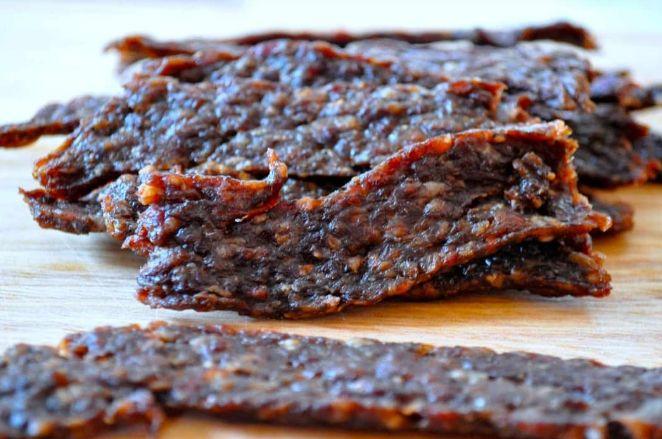



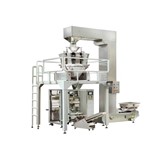




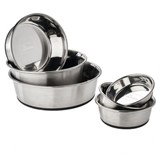

-160x160-state_article-rel-cat.jpg)







